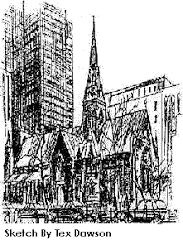Joos van Wassenhove, The Institution of the Eucharist, Galleria Nazionale delle Marche, Urbino, 1473-75
Ave verum corpus
Ave verum corpus is a short Eucharistic hymn that has been set to music by various composers. It dates from the 14th century and has been attributed to Popes Innocent III, Innocent IV and Innocent VI.
During the Middle Ages it was sung at the elevation of the host during the consecration. It was also used frequently during Benediction of the Blessed Sacrament.
The hymn's title means "Hail, true body", and is based on a poem deriving from a 14th-century manuscript from the Abbey of Reichenau, Lake Constance.
The poem is a meditation on the belief in Jesus's Real Presence in the sacrament of the Eucharist, and ties it to ideas on the redemptive meaning of suffering in the life of all believers [adapted from Wikipedia].
Ave verum corpus, natum
de Maria Virgine, [or: ex Maria Virgine]
Hail, true Body, born
of the Virgin Mary,
vere passum, immolatum
in cruce pro homine,
truly suffered, sacrificed
on the cross for humankind,
cuius latus perforatum
fluxit aqua et sanguine: [or: unda fluxit sanguine]
whose pierced side
flowed with water and blood:
esto nobis praegustatum
in mortis examine. [or: mortis in examine]
May it be for us a foretaste [of the Heavenly banquet]
in the trial of death.
O Iesu dulcis, O Iesu pie, O Iesu, fili Mariae.
Miserere mei. Amen.
Oh dear Jesus, Oh merciful Jesus, Oh Jesus, son of Mary,
have mercy on me. Amen.
Wolfgang Amadeus Mozart's setting of Ave verum corpus (K. 618) is perhaps the best known of all. Of the many other settings of the poem, the best known are probably those by William Byrd and Sir Edward Elgar. There is a version by Camille Saint-Saëns. The text is even used in an opera, Poulenc's Dialogues of the Carmelites.
Mozart's version, with instruments only, was adapted by Pyotr Ilyich Tchaikovsky as one of the sections of his Mozartiana, a tribute to Mozart.
The Vienna Boys' Choir (Wiener Sangerknaben) made some notable recordings of Mozart's Ave Verum Corpus in the 20th century.
Mozart's version, with instruments only, was adapted by Pyotr Ilyich Tchaikovsky as one of the sections of his Mozartiana, a tribute to Mozart.
The Vienna Boys' Choir (Wiener Sangerknaben) made some notable recordings of Mozart's Ave Verum Corpus in the 20th century.
_______________
Gregorian chant
_______________
Orlande de Lassus, Ave verum corpus, Canticum [YouTube]
Lodovico da Viadano, Ave corpus verum, Vox Hesperia (Romano Vettori), Ensemble de cuivres anciens du Conservatoire supérieur de Lyon, Jean-Pierre Canihac conducting. [listen]
William Byrd, Ave verum corpus, Choir of Clare College, Cambridge, Timothy Brown conducting; Dominic Wheeler, organ [listen]
Wolfgang Amadeus Mozart, Ave Verum corpus, Chor und Symphonieorchester des Bayerischen Rundfunks, Leonard Bernstein conducting [YouTube]
Gabriel Fauré, Ave verum corpus, Op. 65, No. 1, Cambridge Singers, John Rutter conducting; John Scott, organ [listen]
Sir Edward Elgar, Ave verum corpus, Op. 2, No. 1, Choir of Clare College, Cambridge, Timothy Brown conducting; Dominic Wheeler, organ [listen]
Karl Jenkins, Ave verum corpus, sung by Chantelle Constable [YouTube]
_______________
Franz Liszt composed a version for organ and choir in 1871 [Searle 44]. This had been preceded by a fantasy for piano on Mozart's Ave verum corpus, preceded by a version of Allegri's celebrated 'Miserere', under the title 'A la Chapelle Sixtine' [Searle 461 - two versions]. Versions of this fantasy for orchestra [Searle 360] and piano four-hands [Searle 633] follow closely the 2nd version for piano. The is also a version for organ [Searle 658] with the title 'Evocation à la Chapelle Sixtine.'
Franz Liszt, A la Chapelle Sixtine (Miserere d'Allegri et Ave verum Corpus de Mozart) [1st version], S461, Leslie Howard, piano [CML] (info)
Franz Liszt, A la Chapelle Sixtine (Miserere d'Allegri et Ave verum Corpus de Mozart) [2nd version], S461, Leslie Howard, piano [CML] (info)
Franz Liszt, A la Chapelle Sixtine (Miserere d'Allegri et Ave verum Corpus de Mozart), S461, Valerie Tryon, piano [NML] (info)
Franz Liszt, A la Chapelle Sixtine (Miserere d'Allegri et Ave verum corpus de Mozart), S360, Netherlands Philharmonic Orchestra, Hartmut Haenchen conducting. [NML] (info)
Franz Liszt, A la Chapelle Sixtine (Miserere d'Allegri et Ave verum corpus de Mozart), S363, Elisabetta Dessì and Francesco Giammarco, S363 [NML] (info)
Franz Liszt, Evocation à la Chapelle Sixtine, S658, performed by Olivier Vernet on 1888/2001 Rinckenbach/Aubertin organ in the church of Saint-Thiébaut in Thann, Haut-Rhin. [YouTube: Part I - Part II]
Franz Liszt, Evocation à la Chapelle Sixtine, S658, performed by Christoper Herrick, on the 1878/2000 Lewis/Harrison organ of Ripon Cathedral [CML] (info)
Franz Liszt, Evocation à la Chapelle Sixtine, S658, performed by Martin Hasselbock on the Ladegast organ of St. James Cathedral in Köthen [NML] (info)
_______________
Pyotr Ilyich Tchaikovsky, The Orchestral Suite No. 4 Op. 61 (Mozartiana) performed by The Chicago Symphony, Claudio Abbado conducting. [listen to entire work]
Mozartiana is in four movements and lasts approximately 20 minutes.
3) Preghiera. Andante ma non tanto (B flat major)After Franz Liszt's piano transcription of the Ave verum corpus, K. 618. (In 1862 Liszt wrote a piano transcription combining Gregorio Allegri's Miserere and Mozart's Ave verum corpus, published as "À la Chapelle Sixtine" (S.461). Tchaikovsky orchestrated only the part of this work that had been based on Mozart.) [listen]
4) Thème et variations. Allegro giusto (G major)After the piano Variations on a Theme by Gluck, K. 455. (The theme was the aria "Unser dummer Pöbel meint", from Gluck's opera "La Rencontre imprévue, or Les Pèlerins de la Mecque"). [listen]
_______________
A recent version of this piece was recorded by the girl choristers that make up the group "All Angels"; the words set to the music from the ITV series Brideshead Revisited by Geoffrey Burgon. [YouTube]
[Information from Wikipedia.]

